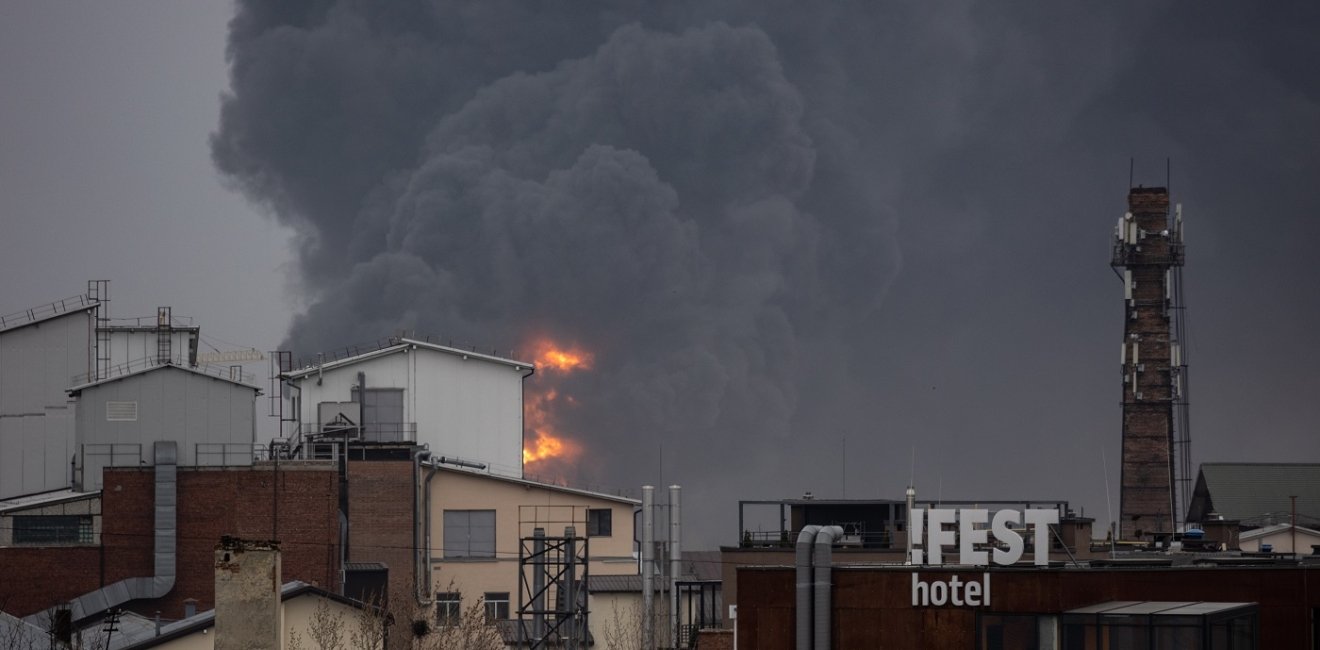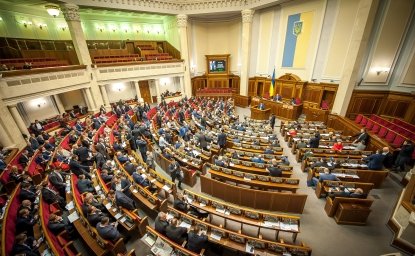
A blog of the Kennan Institute
Beginning March 22, Russia resumed its wide-scale attacks on the Ukrainian power system, just as it did from the beginning of September 2022 until the spring of 2023. As of now, Russians have conducted five massive attacks this spring: on March 22 and 29, on April 11 and 29, and on May 8. In addition to these attacks, Russia has also attacked single facilities with missiles and drones at various times. For instance, during the week of April 8–12, single energy facilities were attacked and damaged daily, in a move separate from the wide-scale attacks.
Russia’s energy terrorism of 2022–2023 inflicted significant losses on Ukraine's power system, including wiping out a substantial portion of Ukraine’s energy capacities and capabilities in the occupied territories, such as the Zaporizhzhia Nuclear Power Plant. Despite the immense challenges, Ukraine nonetheless managed to enter the winter of 2023–2024 with a marginally sufficient volume of capacities to meet energy demand.
However, the situation has taken a turn for the worse with the new waves of massive Russian strikes, further eroding Ukrainian energy capacities. The delayed delivery of military aid to Ukraine in late 2023 and early 2024, which also meant a deficit in Ukraine’s air defense capabilities, has significantly increased the vulnerability of Ukraine's energy infrastructure to air strikes. This urgent situation demands immediate attention and action.
Furthermore, the Russians have changed their tactics compared to 2022. In 2024 the Russian army has delivered more concentrated attacks by using more missiles to target a single object during each attack, making it more difficult for Ukraine’s air defense to protect the target.
List of Losses
During March–May, Russians attacked all of Ukraine’s thermal power plants and key hydropower plants. In the city of Kharkiv, all power generation facilities were destroyed, as was most of the transmission infrastructure connecting the city with the rest of the Ukrainian power system. Kharkiv residents faced cutoffs for weeks.
According to official reports, the Ukrainian power system lost about 9 GW of power generation between March 22 and May 8, and only a small share of this can technically be repaired by next winter. To understand the scale of these losses, the capacity of Ukrainian nuclear power plants amounts to about 7.7 GW, the allowed capacity of electricity import is 1.7 GW, and the average winter consumption during the war has been about 16.5 GW.
All thermal power plants are destroyed or heavily damaged. Two hydropower plants, including the biggest one, the Dnipro HPP (DniproGes), have suspended operations. This is in addition to the 2023 destruction of the Kakhovka HPP, located in the occupied territory.
In addition to the power system, Russia started attacking Ukraine’s underground gas storage facilities. Those with the highest capacities were attacked multiple times.
The Situation as of Mid-May
In late April and early May, the power systems faced a deficit during some hours, though the situation remained manageable. During sunlit mid-day hours, solar power generation supplemented the electric power system, while electricity imports from Europe were used during the peak evening hours. On some days, excessive solar power generation even permitted some electricity exports.
However, the attack of May 8 changed the situation radically as the volume of available capabilities decreased further. As a result, the import capacity was not enough to cover the deficit, and the transmission system operator had to restrict consumption in all regions. Up to mid-May, households did not face any restrictions as the authorities prioritized delivering energy to households, while restricting industrial consumption. In mid-May, however, emergency cutoffs covered households as well.
The Prospects
It will be almost impossible to renew the power system adequately to get the country through the next winter without a power deficit. Ukraine will face rolling blackouts (scheduled cutoffs) during the winter, and the scale of these will probably be comparable to what the country experienced during the winter of 2022–2023—or worse, if the power system is not protected from drone and missile attacks.
The damage to underground gas storage facilities from Russian attacks also presents a risk to getting through the next winter, as about half of winter demand is covered by gas from storage facilities. So Ukraine will probably have to rely more on gas imports from Europe during the winter. This presents yet another problem because in recent years, European countries have relied on storing gas in Ukraine.
What Can and Should Be Done?
Ukraine needs to develop its distributed power generation, which is less vulnerable to air attacks as it consists of more facilities with small capacities: gas-fired power generators, renewable energy facilities, and power storage plants. Authorities have passed some regulations to simplify the process of connecting gas turbines. However, the biggest obstacle to accelerating this operation in Ukraine is the debt in the electricity market, which would undermine interest in entering the market, especially in a context of war and its attendant uncertainties. Also, how much can actually be done toward installing the necessary gas turbines and batteries by next winter? So the damaged facilities must be repaired.
Some of the damaged thermal power plants can be repaired by next winter. Doing so will require equipment, some of which can be produced in Ukraine, with the rest produced in other countries supporting Ukraine. Some countries have already committed to providing Ukraine with the equipment from their own closed power plants.
Of course, all this will take funds that the energy companies currently lack, after two years of Russia’s energy terrorism. The biggest Ukrainian privately owned energy holding reported needing $350 million to repair capacities destroyed from March to May.
Without a reliable air defense, however, repairing these facilities won’t make much sense. The need is critical, and action is urgent.
The opinions expressed in this article are those solely of the author and do not reflect the views of the Kennan Institute.
Author

Director, Energy Program, Ukrainian Institute for the Future

Kennan Institute
After more than 50 years as a vital part of the Wilson Center legacy, the Kennan Institute has become an independent think tank. You can find the current website for the Kennan Institute at kennaninstitute.org. Please look for future announcements about partnership activities between the Wilson Center and the Kennan Institute at Wilson Center Press Room. The Kennan Institute is the premier US center for advanced research on Eurasia and the oldest and largest regional program at the Woodrow Wilson International Center for Scholars. The Kennan Institute is committed to improving American understanding of Russia, Ukraine, Central Asia, the South Caucasus, and the surrounding region through research and exchange. Read more

Explore More in Focus Ukraine
Browse Focus Ukraine
Talking to the Dead to Heal the Living

Ukrainian Issue in Polish Elections


